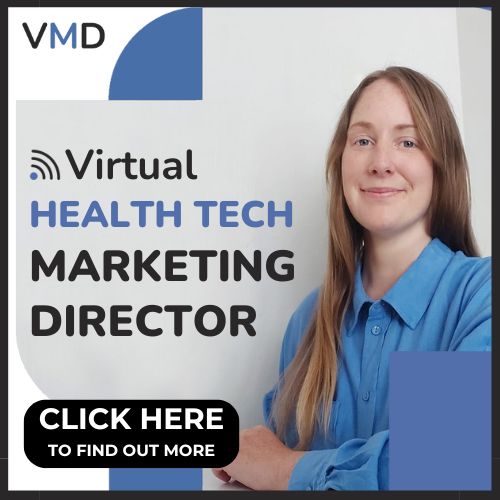
The recent General Medical Council (GMC) report titled ‘Caring for doctors, caring for patients’ outlined that “Medicine is a tough job, but we make it far harder than it should be by neglecting the simple basics in caring for doctors’ wellbeing.”
There is an abundant amount of evidence that proves workplace stress in healthcare organisations affects the quality of care for patients – resulting in poor patient safety outcomes such as medical errors, as well as the negative impact on the health of doctors. Even before COVID-19, the mental and physical wellbeing of doctors has been under the spotlight with concerns around patient safety and retention, with the NHS facing a shortage in the profession, as well as the falling number of medical students training to be future doctors. The pandemic has only exacerbated pressures further.
A recent survey from the BMA found that 41% of doctors were suffering from depression, anxiety, stress, burnout, emotional distress or another mental health condition relating to or made worse by their work, with 29% admitting that it had got worse during the pandemic. Simon Applebaum, Managing Director, Spirit Digital, discusses how digital solutions, such as remote monitoring devices, can help to ease the workforce burden faced by doctors and deliver the benefits of digital healthcare.
The Acceleration of Digital Innovation
Digital innovation is no longer seen as something of the future, it’s a consumer expectation that was largely unmet until March of this year. 2020 has become the year when health and care organisations across the nation had no choice but to adapt to the new landscape and implement available technology to help existing services work more coherently and deliver care to those most vulnerable in the safety of their homes.
In the early days of the pandemic with lockdown restrictions in place, we saw an abundance of new digital healthcare apps and tools enter the market, such as Test and Trace, on-demand doctor apps and virtual consultations. Despite these digital technologies being developed to help in times of need, the reality is that these are not new, but are only now being leveraged for the benefits they bring. This includes an increase to 85% utilisation of electronic prescription services, as well as 99% of GP practices using remote consultation platforms, compared to before lockdown, where only 25% of GP appointments were carried out remotely, showing how the figures have been reversed as a result of the pandemic.
The Department of Health and Social Care called for remote monitoring solutions to help care home patients, as well as to support patients with long-term conditions or those discharged from hospital to free up COVID-19 beds during the peak of the pandemic. Remote monitoring is a key area of technology adoption at both a local and regional level since COVID-19, and will continue to play an important role in easing the increased pressure on doctors.
Utilising Real-Time Data
Remote monitoring devices capture real-time data and record patient vital signs, allowing care to be maintained regardless of the patient’s location. By having enhanced real-time visibility of their patient in a more manageable format, these technologies can help to reduce the burden and stress on doctors during unprecedented times.
A key benefit of remote monitoring devices is the improvement of the quality of data and information to help deliver timely, effective and safe care. The data stored in these devices can contribute to a more complete medical history, as well as inform clinical research.
Measurements conducted by the patient, such as blood pressure and weight, become instantly available on the doctor’s dashboard. Patients who miss a measurement automatically receive a text message reminder, and doctors are notified when patient measurements fall outside of the normal range. This way of working reduces the administrative side of the doctor’s role, without impacting the quality of care.
Greater Collaboration between Patients and Doctors
By connecting patients with their clinical teams from the comfort of their home, patients are given much greater involvement in the management of their health, while healthcare professionals monitor their vital health information. Clinical teams can access the necessary information on their patients quicker than they would in the traditional setting, which allows them to rapidly assess a patient and intervene when and where more urgent care is needed.
As a form of preventive care, remote patient monitoring puts everyday wellness at the forefront of patient care. It makes patients an active participant in their healthcare by empowering them to willingly take control with the necessary tools and resources in place. When patients feel more involved in the process, it is more likely that they will become more invested in improving their health with their doctor’s guidance, allowing for a more collaborative experience for both parties.
Maintaining Care in a Socially Distanced Way
With restrictions in place limiting the number of face-to-face consultations, video consultations and remote monitoring technologies help to minimise the footfall in healthcare facilities and allow resources to be focused on where they are needed the most. With less congested waiting rooms, doctors’ schedules are freed up to allow for other patients or important duties to be prioritised.
In a pandemic, there may remain concerns around the health of the doctor and potentially passing on the virus to patients while trying to maintain care. However, remote monitoring can allow care to be maintained virtually, abiding by social distancing roles and reducing the risk of cross-contamination at a time when our collective focus is on protecting the NHS and those who are vulnerable.
Additionally, remote monitoring technology helps to release hospital beds for those in need, while still concentrating on patients whose health may be deteriorating. The use of reliable and consistent data in real-time helps doctors to gather the necessary information, provide feedback, medicine adjustments or other therapies while the patient stays at home. This technology helps to assist in managing increasing demand without over-stretching already strained doctors and resources.
Bettering Doctors’ Experience
With regular remote updates, doctors can gain confidence in their ability to deliver care remotely, saving time and reducing risks to their own health, their families and that of their patients. With fewer patients visiting clinics or surgeries, more time can be spent delivering this valuable care.
The NHS People Plan and NHS Long Term Plan prioritise staff retention and satisfaction for doctors and other staff groups, outlining how in the next five to ten years, they will build a medical workforce fit for the future. This expectation is being driven by the new way in which patients expect care to be delivered through technology. We must build on good practice and initiatives to create the conditions to ensure the NHS attracts, supports and retains its doctors.
Doctors are vital members of the NHS workforce, and more must be done to ensure their wellbeing is as much of a priority as that of their patients. Moving forward, the smarter use of technology such as remote monitoring solutions, which provides doctors with real-time visibility of their most at-risk patients and the ability to run ‘virtual wards’ must play a key role in our future model of continuous and preventative care, but just as importantly, to reduce the strain and burden on these teams.










